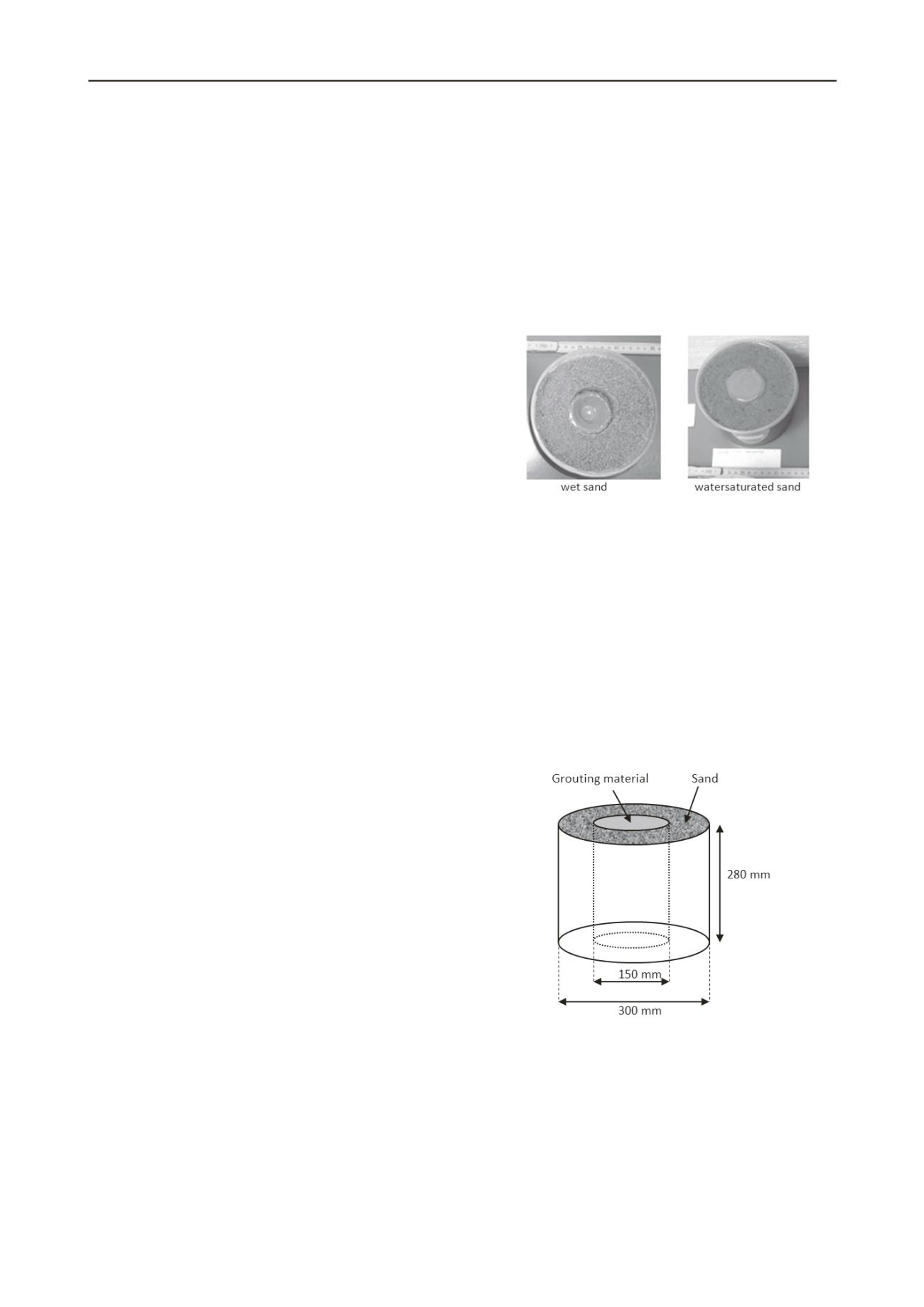
3364
Proceedings of the 18
th
International Conference on Soil Mechanics and Geotechnical Engineering, Paris 2013
and coarse grained soils: coarse grained soils presents some
structure alterations after freeze thaw cycles, fine grained soils
presents heaves and changes of plasticity index due to water
pulling during freezing. Most damages in road structures occur
when subsoil on ground surface is made of fine grained soils
(ZTVE-StB 94).
Forages of vertical borehole heat exchangers attain depths in
order of 100 m. Therefore, increasing of effective pressure with
depth reduces the negative effects of freeze, as described by
Ruckli (1950): for example, frost heave velocity for soils with a
grain size between 0.005 mm and 0.010 mm decreases as
pressure increases and is around equal to zero for pressures
higher than 30 kN/m². Consequently, stress distribution in the
soil and therefore on the borehole heat exchanger is considered
as an important influence parameter. It leads to suppose that soil
has a positive effect on frost resistance of the whole system,
what should be verified here experimentally.
3 ACTUAL STANDARDS AND TESTS
There is actually no guideline for evaluating the frost resistance
of vertical borehole heat exchangers. Developing a new
procedure consists in defining the test experiments and the
criteria regarding freezing resistance of the material. Following,
an overview of the existing tests on freeze thaw resistance of
different types of materials is given as base for possible
procedures; under consideration that it should be further
investigate with boundary conditions from vertical borehole
heat exchangers.
German and international standards for freeze-thaw
experiments on soils exist for natural stones and aggregates. The
German standard DIN 52104:1982 which gives instructions
regarding freeze-thaw behavior of natural stones was replaced
by the standard DIN EN 12371, from which the latest edition
appeared in 2010. Details about the determination of the freeze
thaw resistance of aggregates are given in the German standard
DIN EN 1367-1.
For unconsolidated material such as clay, silt and sand, there
are no rules and standards. However, those types of soil are
subject of research investigations (Rückli 1950, Simonsen and
Isacsson 2001, Andersland and Ladanyi 2004).
For freeze thaw resistance of hardened concrete according to
the common standards, a distinction between freeze-thaw-
resistance on the one hand with and on the other hand without
de-icing agents is made (pre-standard DIN CEN/TS 12390-
9:2006). The first one corresponds to the resistance to repeated
freeze-thaw cycles in contact with water. In case of the second
one, the specimen is in contact with road salt. Usually the de-
icing agent corresponds to a 3% NaCl solution. In the pre-
standard DIN CEN/TS 12390-9 three methods are described:
the slab test as a reference, the cube method and the CF and
CDF testing (Capillary Suction) as alternatives. The difference
between CF and CDF method is the test fluid (with water or
with deicing agent).
Although no standards are available about freeze thaw
resistance in application to borehole heat exchanger, some
research reports deals specifically with freeze effects on grout
materials (Herrmann 2008, Müller 2009, Niederbrucker et al.
2008).
Following test procedure takes care of those different
standards and research reports and extends the actual analyses
considering effects of freeze thaw with the surrounding soil.
4 EXPERIMENTS AND RESULTS
4.1
Preliminary tests
Experiments are conducted in a cylindrical encasement with a
sample of grout material and soil. A more detailed description
of the system for those tests is available in the next part.
Preliminary tests has been conducted on samples with reduced
dimensions in order to investigate the influence of water
saturation of the surrounding soil and to validate the assembly
procedure.
Two samples of cement and sand are represented on figure 1.
In both cases, cement characteristics and assembly procedure
remains the same. If the surrounding soil has a low saturation
degree, a cone appears on the upper part of the cement cylinder.
The cement part possesses in this case higher unconfined
compressive strength and modulus of elasticity with an
increasing rate in the order of 40 %.
Figure 1: Influence of the water saturation of the surrounding soil
4.2
Test procedure
In order to avoid scaling factors, diameter of the grouting
material cylinder is in the same range of diameters of real
borehole heat exchangers, see figure 2 and 3. Dimensions of the
cylindrical encasement were then selected taking in
consideration the following statements: on one side, a large
distance between rands of grouting material and rands of
encasement limits the effects of deformations of the encasement
on the grout material due to high temperature changes; on the
other side, an increasing quantity of soil may lead to longer
procedure time due to freezing and thawing periods and to more
constraints regarding transport and storage due to an higher
weight of the sample, which are to be considered for a
reproductible procedure.
Figure 2: Dimensions of the samples of soil and grouting material


